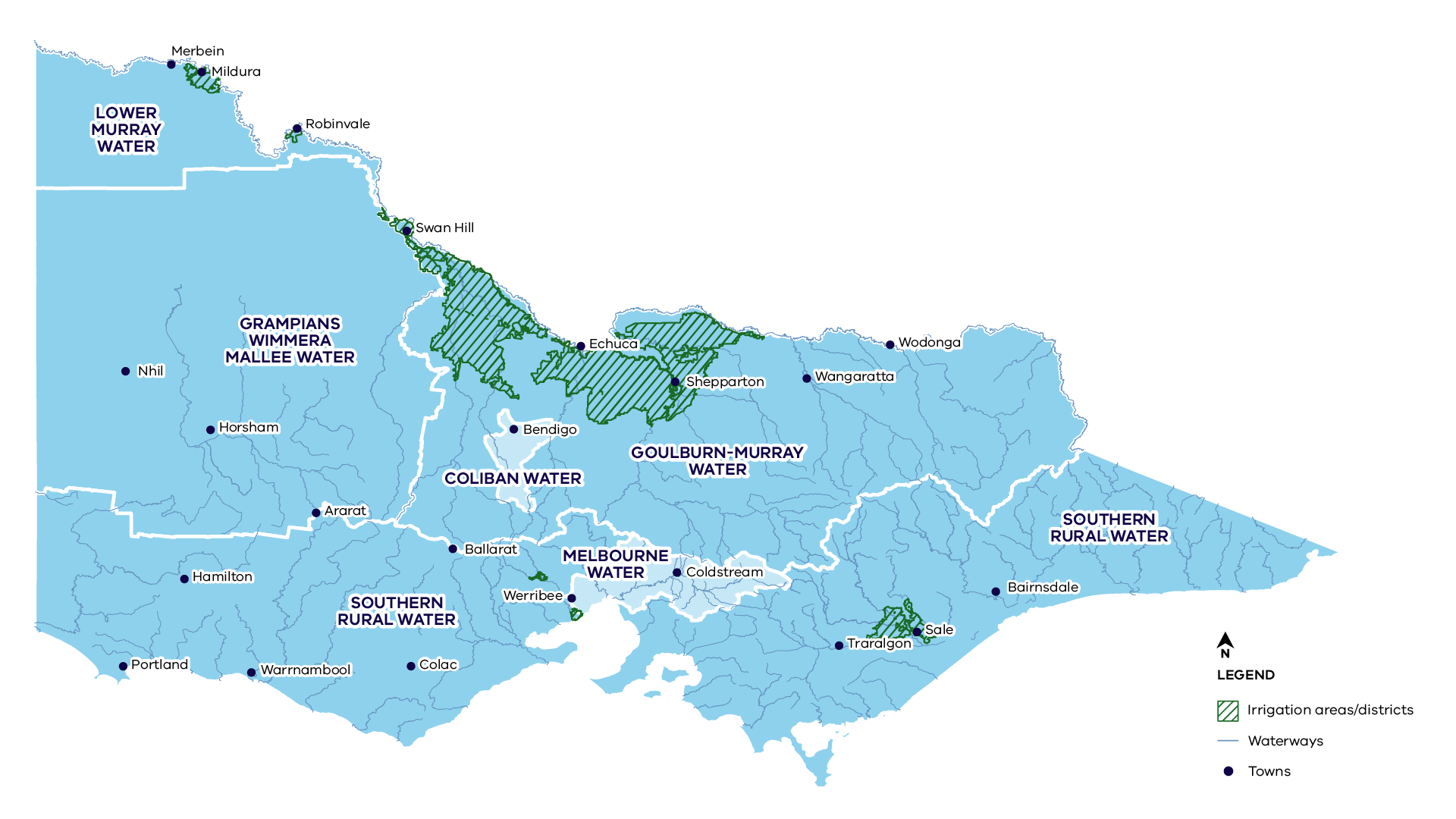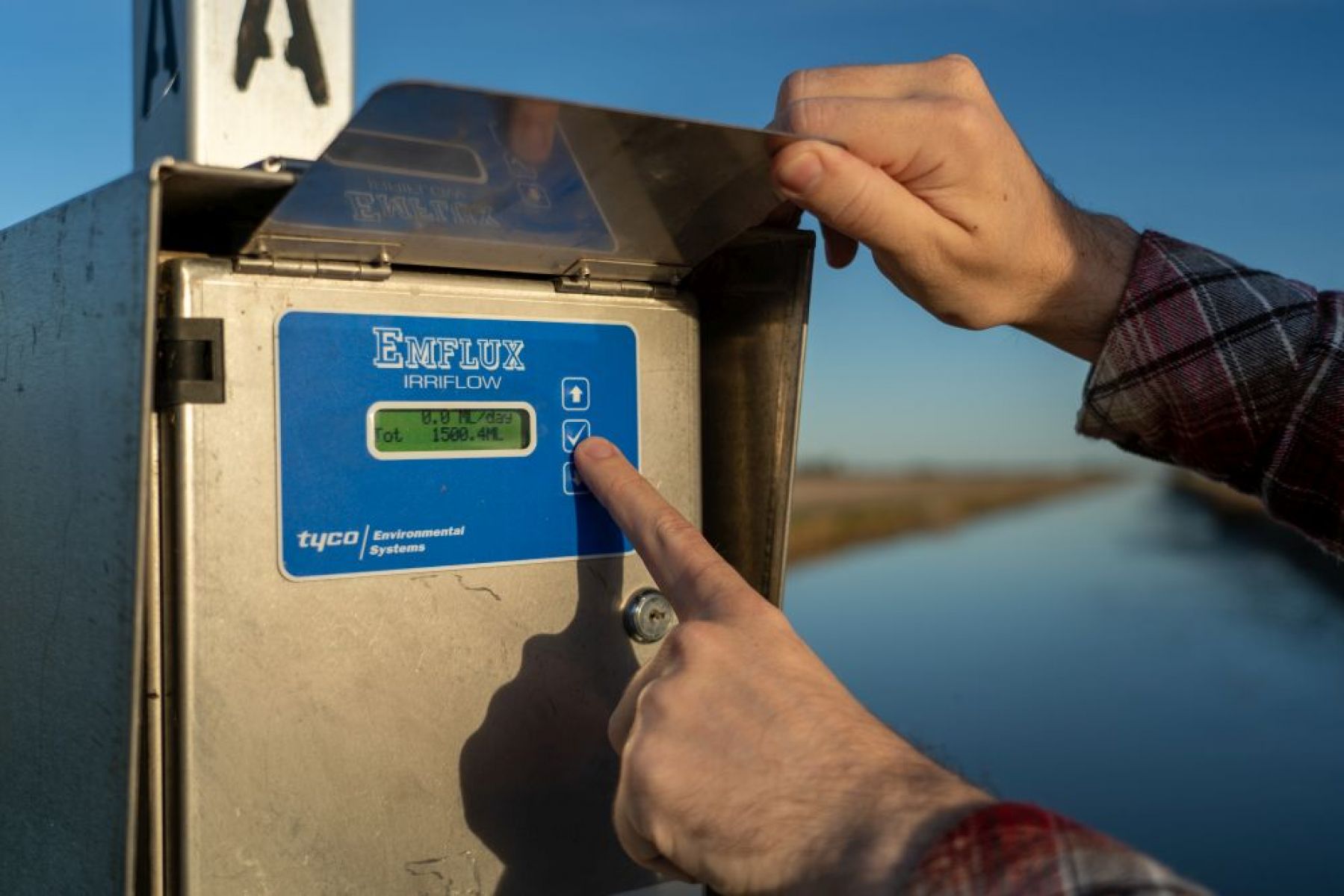On this page:
Non-urban water meters
Non-urban water meters are meters that measure the water taken in non-urban areas for irrigation, environmental watering and stock and domestic use.
They allow water users and water corporations to accurately measure how much water is taken and water corporations to account for the distribution and use of water. They also play a vital role in monitoring compliance with water entitlements.
Non-urban meters do not include stream gauging stations, groundwater infrastructure and urban supply and distribution systems.
Telemetry
Telemetry is the electronic transmission of usage that is being recorded through a meter. Telemetry devices can be fitted to non-urban meters to provide usage data in real time which can be used to monitor water use.
Manual meter reading is used where:
- costs of telemetry outweigh benefits
- telemetry is not possible.
Responsibility for non-urban meters in Victoria
In Victoria, water corporations with rural customers own, maintain and read meters. Water corporations are responsible for making decisions about whether a meter is needed and for selecting metering and telemetry devices.
Victoria’s Non-urban Water Metering Policy guides water corporations in making these decisions.
Victoria’s six rural water corporations

Victoria’s policy for non-urban water metering
Victoria’s policy on non-urban water metering applies to all water corporations with rural customers. The purpose of the policy is to provide assurance that:
- water taken under entitlements is accurately and comprehensively metered
- risks to water resources and the relative costs and benefits of metering are considered.
Non-urban water metering policy
Victoria’s non-urban metering policy was updated in 2024 to align with the Metrological Assurance Framework 2 (MAF2), which describes the nationally consistent compliance management approach for non-urban water meters in Australia.

Metering action plans
The Policy sets requirements for water corporations with rural customers to prepare and maintain metering action plans. All plans must:
- identify their current meter fleet profile
- specify their processes to select, inspect, validate, maintain and replace meters
- outline improvement actions and future investment in metering and telemetry.
Metering action plans are available on rural water corporation’s websites.
Non-urban water metering policy details
New meters
Meters that conform with AS4747 must be used for all:
- new metered sites
- upgraded metered sites.
Existing meters
Meters on existing sites should be replaced:
- by 2025 if they do not comply with a contemporary standard or conform with AS4747
- at the end of their operational life if they comply with a contemporary standard or conform with AS4747.
Telemetry installation
Metered water take must be telemetered by June 2025. Water corporations will assess the full range of costs and benefits of installing telemetry to meters, including benefits of stronger compliance.
Water corporations may retain manual meter reading where telemetry is not viable. For example, in valleys with poor reception. Alternative technology can be applied in these situations.
Water corporations can vary meter requirements in certain circumstances
A water corporation can vary the metering rule where:
- risks are manageable
- costs outweigh benefits
- the site requires the application of hydrometric monitoring standards.
Water corporations must meet meter reading requirements
Water corporations must read meters on operational service points:
- at least once a year for low volume or low-risk customers
- at least twice a year for surface water winter-fill licences
- frequently for high-risk meters.
Contact your local water corporation if you want to learn more about water metering.
Metering policy implementation reporting
Victoria publishes an annual non-urban metering implementation report on metering reform. These reports meet Victoria’s continuing obligation to monitor and report on Victoria’s progress in implementing non-urban water metering. See for non-urban water metering reports more information.
Page last updated: 31/01/25
